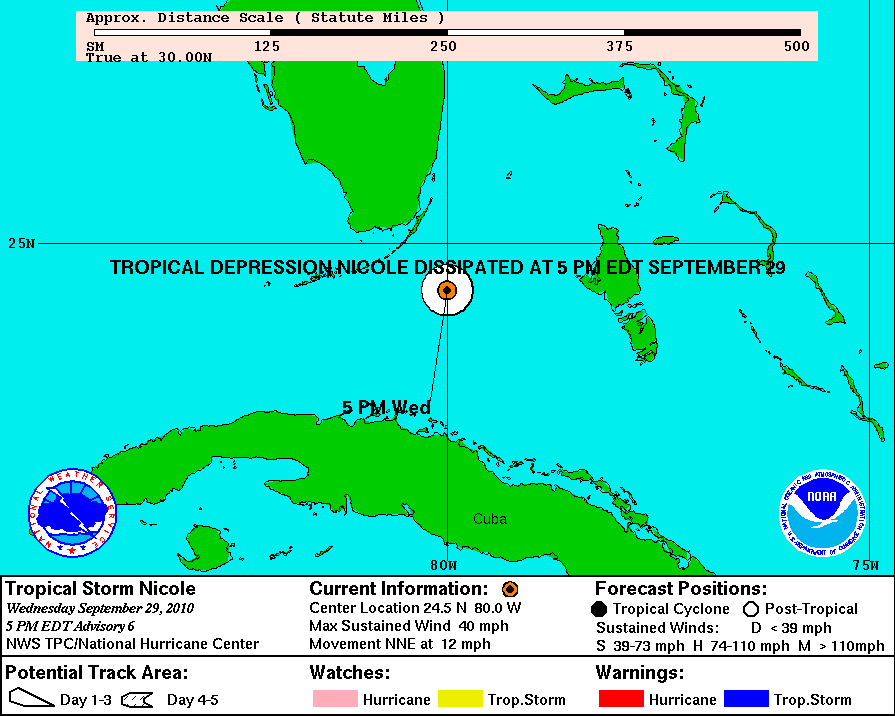“Tropical Storm Nicole” came and went in a matter of hours, as did hurricane Lisa and major hurricane Julia. It is unlikely that any of these would have made it into the storm record 70 years ago. Certainly not as a major hurricane.
Nevertheless, they all go into the modern database – and no doubt this will be declared to be an “active hurricane season.” I suspect that coastal residents might disagree. The older apples for apples standard was based on hurricanes which made landfall – which would give 2010 a low score.
Due to technology enhancements, observers are much better at detecting storms now. If the wind speed reaches the next status for a few minutes, the storm’s ranking gets bumped up. But it isn’t a fair comparison vs. older records.




This is the same as the sun spot count issue. Galileo could not have seen all the little specks that SOHO sees. Sometimes the specks have to be circled in SOHO photos otherwise people miss them. And SOHO never has a cloud to obstruct viewing.
There really is no way to know how many of these Atlantic hurricanes that never come to land have happened in the past. Going by how many hurricanes have hit land and an approximation of total that don’t hit land (a correlation) I would guess that there have been more in the past before satellite than since satellite. To guess otherwise would show you probably have a global warming bias.
Lets keep in mind that in 2002 NHC changed the rules so subtropicals and storms that didn’t get names before 2002 now get names…
from wiki…
Naming issue
During the 1950s and 60s, subtropical cyclones were simply called “semi-tropical”. There was much discussion between meteorologists in the late 1960s as of what a subtropical cyclone was. So, in 1972, the National Hurricane Center (NHC) officially classified the word under a new category, different from actual tropical cyclones. During the 1970s, the NHC began making a new list of names, separate for subtropical cyclones, although that process was soon canceled because it was rejected by many scientists. After that, subtropical storms were just numbered, such as Hurricane Karen from 2001 which was originally named Subtropical Storm One.[2] But on 2002, a policy change had tropical and subtropical storms share the same list of names for the whole season, which started with Subtropical Storm Nicole in 2004.
So …what we have is another biased, crap data base. Go figure. Wasn’t there a NOA release acknowledging the lack of any trend in hurricane frequency and intensity with rising CO2 on WUWT? Think I read it. It would be useful to repost if my memory is correct. In fact, I should have (would like to) print a copy. With all the peer-reviewed papers coming out questioning the science of Global Climate Disruption, I was thinking of putting together a presentation of `the other side of the story”.